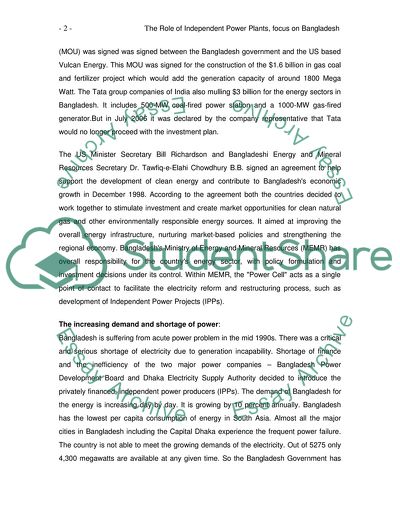Cite this document
(The Role of Independent Power Plants Term Paper, n.d.)
The Role of Independent Power Plants Term Paper. https://studentshare.org/politics/1711269-the-role-of-independent-power-plants-focus-on-bangladesh
The Role of Independent Power Plants Term Paper. https://studentshare.org/politics/1711269-the-role-of-independent-power-plants-focus-on-bangladesh
(The Role of Independent Power Plants Term Paper)
The Role of Independent Power Plants Term Paper. https://studentshare.org/politics/1711269-the-role-of-independent-power-plants-focus-on-bangladesh.
The Role of Independent Power Plants Term Paper. https://studentshare.org/politics/1711269-the-role-of-independent-power-plants-focus-on-bangladesh.
“The Role of Independent Power Plants Term Paper”. https://studentshare.org/politics/1711269-the-role-of-independent-power-plants-focus-on-bangladesh.


